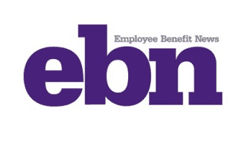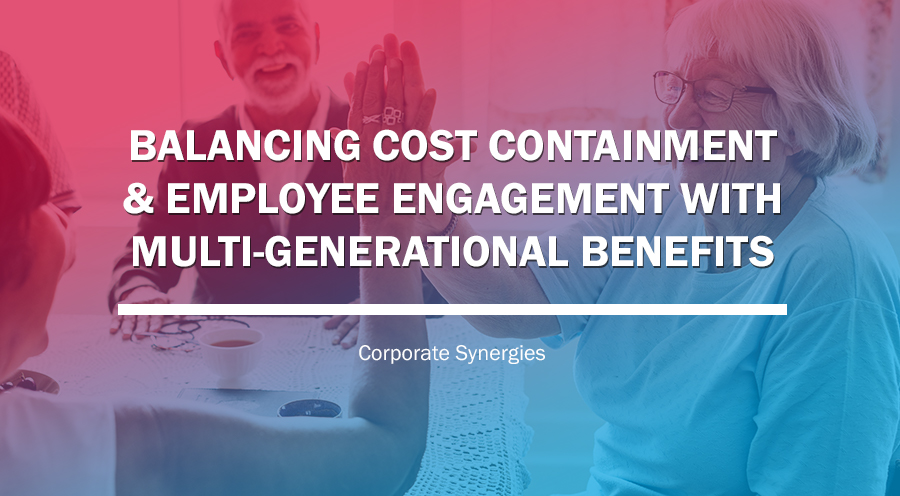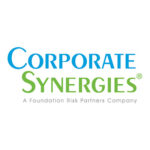
Employers and HR teams are managing employees (and a benefits strategy) for a workforce that stretches across three to five generations. This workforce is complex; its workers have varying needs from generation to generation, and a multi-generational benefits strategy is in order.
Baby Boomers preparing for retirement may have an ongoing relationship with doctors and a number of medical appointments in a given year. On the other hand, Millennials and Gen Z—the latest generation to enter the workforce—may shy away from primary care doctors and focus more on options to pay off student loans and start saving for retirement.
Finance leaders understand they need to retain employees—turnover is expensive—but they’re still interested in cost containment strategies. Meanwhile, HR is focused on engaging employees in the organization’s benefit plans.
Employers should consider approaching their multi-generational benefits by finding a balance between cost containment and employee engagement.
Cost Containment
For the first time in six years, the number of employers offering only high-deductible health plans is set to drop 9%.1 But the idea of healthcare consumerism is here to stay as employers see modest rises in health insurance premiums.2
To effectively contain costs, employers should first weigh the pros and cons of their funding model—while most companies start out with fully insured models, employers should seriously evaluate a move toward self-funding. Sure, self funding requires a larger appetite for risk, but it provides insight into claims and utilization data that you can leverage to make informed decisions about cost containment.
One way to move toward a self-funded model is with level-funding, which allows employers the benefit of claims data while paying a consistent premium each month. In a level-funded plan, employers work with a third party administrator to determine their expected claims for the year. This number, plus administrative fees and stop-loss coverage, divided by 12, becomes the monthly premium.
A tiered contribution model might also help to contain costs without negatively affecting employees. In a typical benefit plan, employers cover a specific percentage and employees contribute the rest—say 90% and 10%, respectively.
In a tiered contribution plan, employees with salaries under a certain dollar amount pay less than those high earners. That means your employee making $48,000 pays $50 while your employee making $112,000 pays more. It’s a way to distribute the contribution across the workforce that enables everyone to more easily shoulder the burden of rising healthcare costs.
Employee Engagement
To create a roadmap that not only helps you gain control of your multi-generational benefits strategy but keep employees of all ages happy, it’s necessary to consider employee engagement. While new options like student loan repayment could be useful to part of your workforce, it’s best to start much simpler with something that affects everyone: time away from work.
A more aggressive paid time off (PTO) policy, telecommuting policies and paid family leave are becoming popular. Many companies are offering PTO just for employees to pursue charitable work—a benefit that resonates with younger workers and can improve company culture. Similarly, generous telecommuting policy recognizes that employees have different needs and shows that employers understand their modern, diverse workforce. Beyond basic time away from work, an extended leave policy outside what the law guarantees is another tool that can keep employees engaged.
Making it easier for employees to get access healthcare is another trending benefit, which can keep workers engaged while contributing to cost containment. Concierge telemedicine has been called the modern version of a doctor’s house call. This relatively inexpensive benefit provides your employees access to care 24/7 by phone or video chat, which is convenient regardless of the user’s generation.
Employees and other covered individuals can connect to a doctor to discuss symptoms and get advice, whether they are prescribed a medication or they need to seek further care. This is another benefit that’s useful for young workers who may not have a primary care doctor or older workers with families.
Finally, your tech-savvy workforce expects to access their plan information wherever they need it. Ensure your carrier offers a mobile app to house insurance cards, coverage and provider information.
When it comes to a multi-generational benefits strategy, creating harmony between Finance and HR might seem like a daunting task. But considering some relatively small benefit changes could be what allows you to offer a benefits package that pleases both departments—and all of your employees.
1 Wall Street Journal, “Employers Change Tactics to Curb Health-Insurance Costs”
2 SHRM, “Employers Hold Down Health Plan Cost for 2019”





